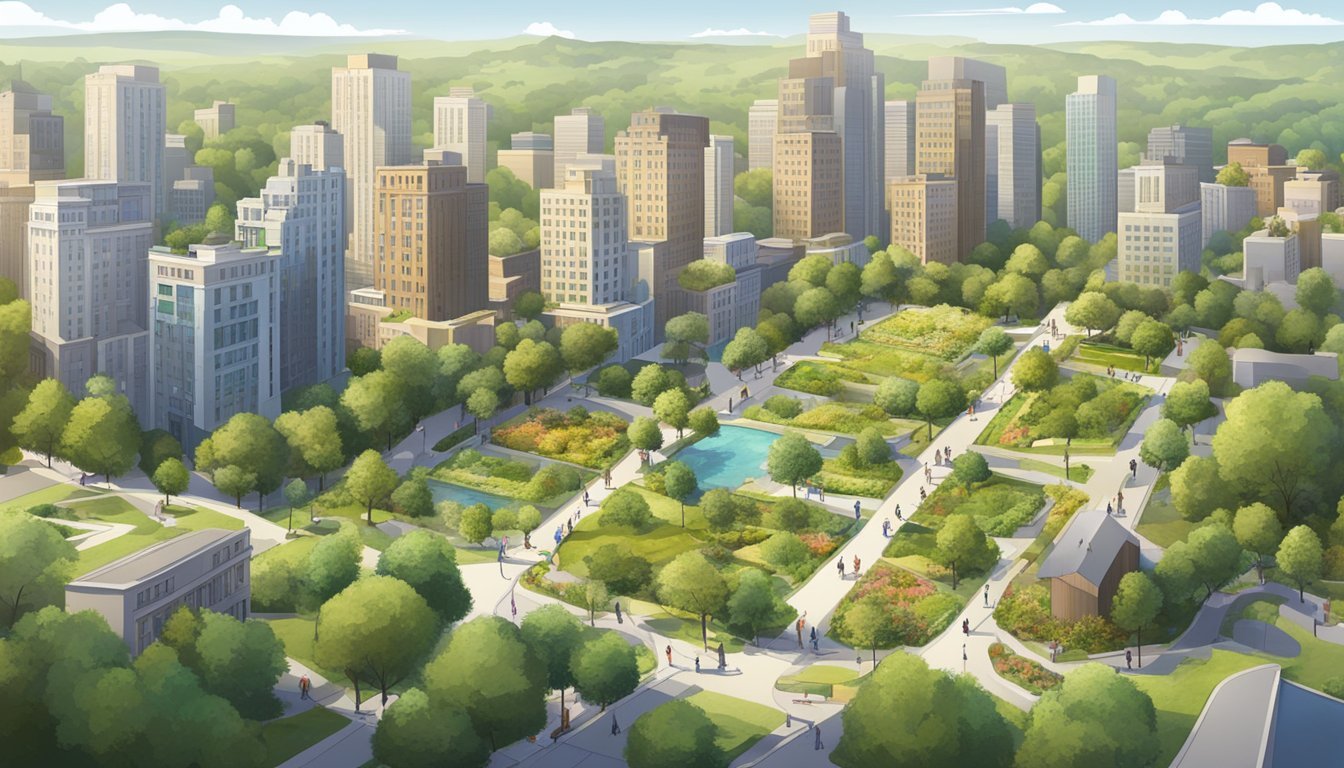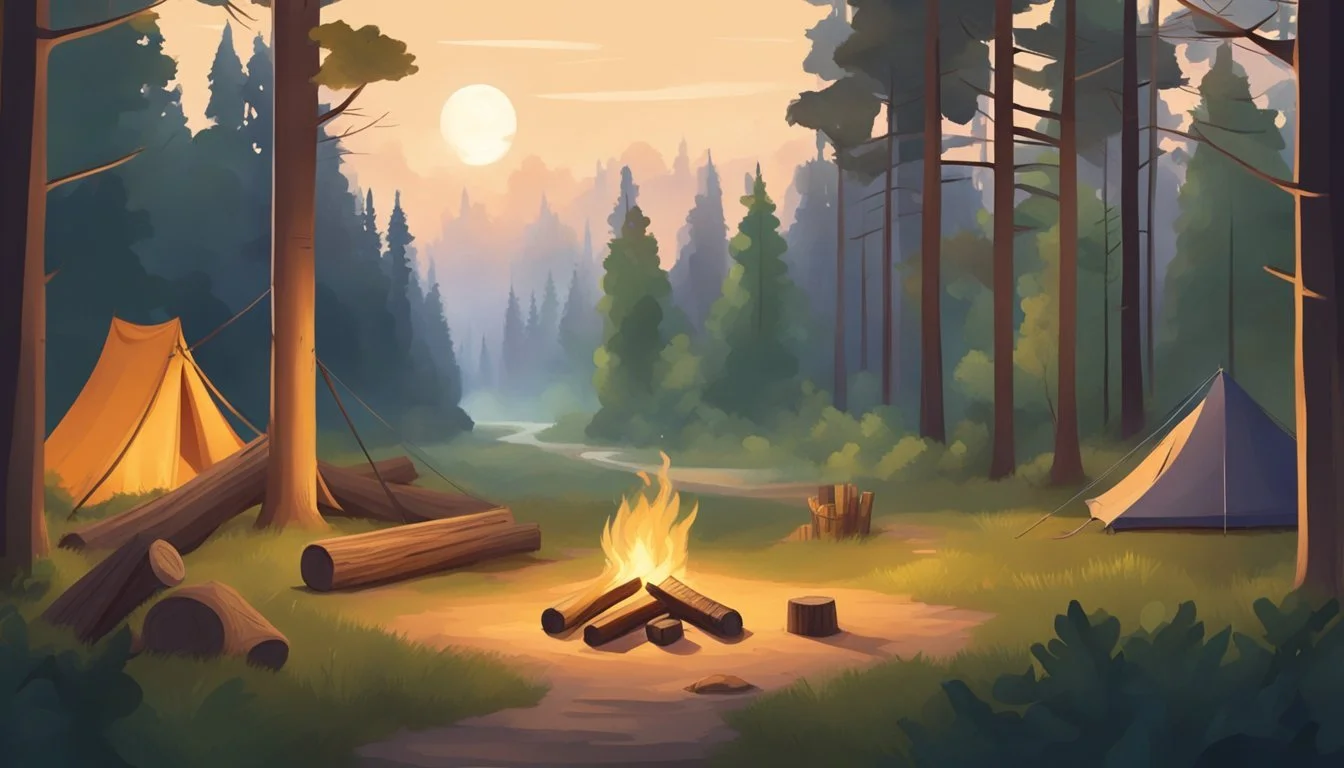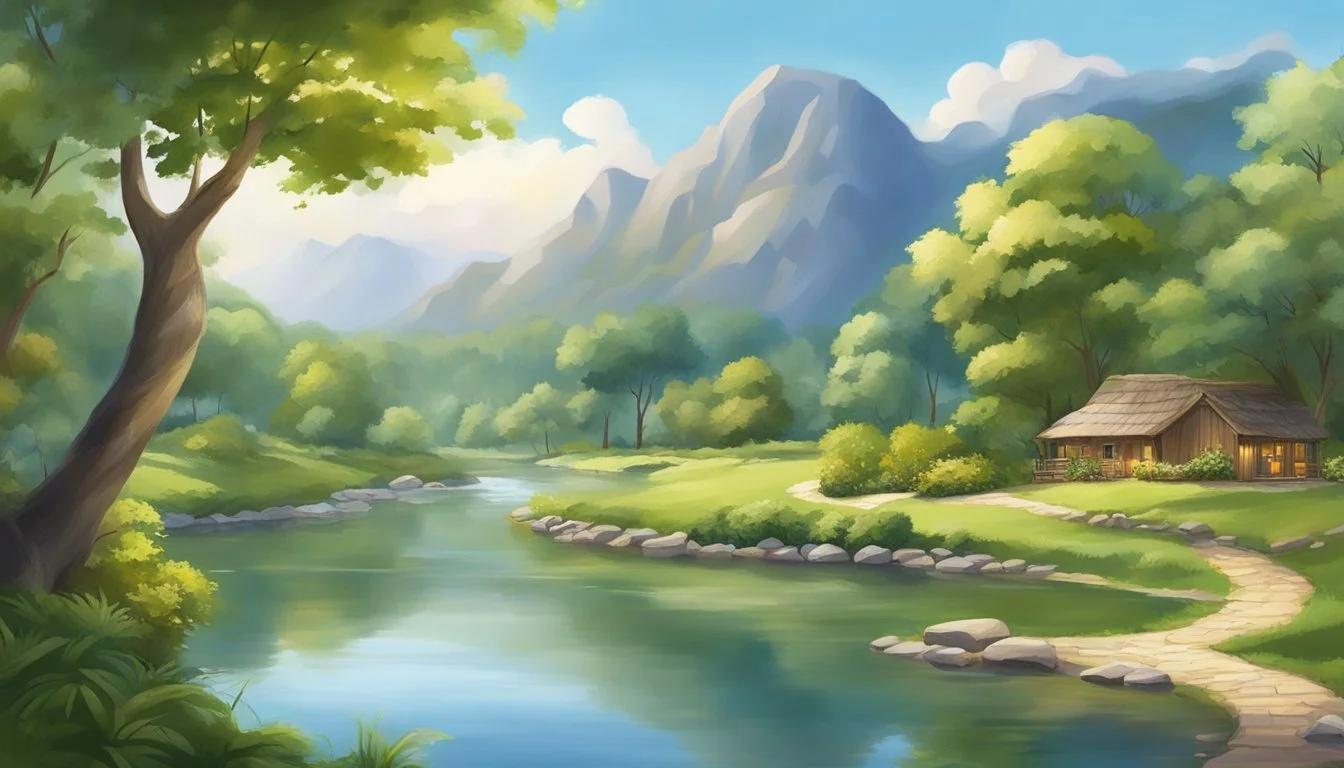Free Land for Outdoor Enthusiasts
Proximity to Nature and Easy Access
For those who thrive on adventure and the tranquility of the great outdoors, the quest for free land near nature's splendor is an exciting journey. Several cities in the U.S. offer proximity to parks, public lands, and a myriad of recreational opportunities that entice outdoor enthusiasts to live and play in close contact with nature. Imagine living in a place where lush parks and sparkling lakes are just a short drive away.
The Urban Outdoor Access Analysis by the Trust for Public Land, in collaboration with REI, highlights cities with excellent access to public lands. Denver offers quick escapes into the Rockies, while nearby cities like Colorado Springs and Boulder offer their unique charms. Boise, Idaho, remains a hidden gem for those seeking less crowded trails and vast open spaces.
Imagine having the freedom to #OptOutside right in your backyard, exploring hiking trails, biking paths, and tranquil rivers without hassle. Living near such natural treasures can bring unparalleled joy and fulfillment to those who cherish an active, outdoor lifestyle.
Evaluating the Concept of Free Land
The concept of free land provides opportunities for outdoor enthusiasts to engage more deeply with natural environments. This section explores the historical and modern contexts of land distribution and the criteria used in these initiatives.
Historical Perspectives on Land Distribution
Historically, land distribution policies in the United States have been pivotal in shaping rural and suburban landscapes.
The Homestead Act of 1862 offered 160 acres of public land to settlers for a small fee, provided they improved and cultivated the land. This legislation aimed to encourage westward expansion and develop unoccupied lands.
In various cultures, communal land grants were also prevalent. Land grants in Spanish and Mexican periods allowed individuals and communities to utilize land for agriculture and settlement, influencing regional development patterns.
These historical policies underscore the long-standing tradition of using free land to promote rural growth and community establishment.
Modern Initiatives and Policies
In contemporary times, several initiatives seek to make land available at low or no cost to foster community development and nature-based tourism.
Some counties in the United States have implemented programs offering free land to attract new residents and stimulate local economies. These programs often aim to revitalize communities by increasing population density and economic activity.
Conservation easements and land trusts also play a significant role. These policies ensure that parcels of land are preserved for recreational and environmental purposes while remaining accessible to the public.
Modern policies continue to echo past traditions, emphasizing the balance between economic development and environmental conservation.
Criteria for Qualifying for Free Land
Criteria for obtaining free land typically include specific eligibility requirements designed to ensure that the land is used constructively.
Applicants often need to demonstrate their commitment to improving the land. This can include plans for building a home or business, engaging in agriculture, or preserving natural habitats for outdoor recreation.
Residency requirements ensure that beneficiaries contribute to the local community, while financial criteria verify the applicant's ability to develop the land responsibly.
These criteria are crucial for ensuring that land distribution programs fulfill their objectives of community growth and sustainable land use.
In conclusion, the concept of free land has evolved through history, and contemporary policies continue to reflect the balance between fostering growth and preserving nature. By understanding these facets, outdoor enthusiasts can better appreciate the opportunities and responsibilities that come with free land programs.
Discovering Free Land Opportunities
Unearthing free land opportunities can be a transformative step for outdoor enthusiasts seeking to live closer to nature. This section explores the various state and regional programs, ways to navigate government and private offers, and tips for a successful application process.
Programs by State and Region
Several states offer programs that provide access to free land, often designed to spur local development or repopulate rural areas. Kansas and Nebraska feature initiatives targeting small town revitalization. Programs in Colorado and Utah often focus on rural agricultural use, ideal for those looking to cultivate land. New York and California have urban programs such as "Adopt-a-Lot," aimed at converting vacant land into vibrant communities.
The Rocky Mountains present unique opportunities for those who appreciate rugged landscapes, while coastal areas in states like Florida and Virginia offer programs that leverage the natural beauty of waterfront properties to attract new residents.
Navigating Government and Private Offers
Navigating the maze of free land offers requires a clear understanding of both government and private sector opportunities. Government programs, often under the umbrella of local or state development authorities, might be more structured but can demand adherence to specific use conditions. Paralleling the Homestead Act, modern offers may require occupancy, development, or agricultural productivity.
Private offers, in contrast, can be more flexible but might come with fewer guarantees. Organizations such as the Western Rivers Conservancy and grant-supported programs by entities like onX help secure access to large parcels of land for public use. These private ventures often align with conservation goals, making them ideal for those looking to preserve natural spaces while gaining land access.
Application Process and Best Practices
Securing free land involves an application process that can vary widely depending on the program. Government initiatives might require detailed proposals outlining intended land use, adherence to development timelines, and sometimes proof of financial solvency. Prospective applicants should be prepared to showcase their vision clearly and convincingly.
For private offers, the process might be more straightforward but could still necessitate discussions about land maintenance and improvements. Best practices include thorough research on eligibility criteria, preparing a compelling narrative of your plans, and maintaining strong communication with program administrators.
Staying organized and proactive throughout the process increases the chances of success, allowing outdoor enthusiasts to turn the dream of free land into reality.
The Allure of Nature and Outdoor Adventure
The allure of nature and outdoor adventure lies in the myriad activities that offer physical and mental benefits, access to beautiful landscapes, and opportunities for personal growth. Below are specific benefits and activities that attract outdoor enthusiasts.
The Benefits of Proximity to Natural Landscapes
Living near natural landscapes such as forests, mountains, and parks provides numerous advantages. Residents can easily engage in outdoor activities like hiking and camping, which promotes physical fitness and well-being. National and state parks offer scenic views and diverse ecosystems, often home to unique flora and fauna.
Access to green spaces also enhances mental health. Just spending time outdoors can reduce stress and improve mood. Moreover, close proximity to these natural areas supports a sustainable lifestyle by encouraging walking and biking over vehicular travel.
Adventures and Activities for the Outdoor Enthusiast
Outdoor enthusiasts have an array of activities to choose from. National parks and state parks are excellent for hiking, offering trails that vary in difficulty and scenic beauty. Climbing is another popular activity, with mountains challenging both beginners and experienced climbers.
Camping is favored by those seeking to immerse themselves in nature. RV camping combines the comfort of home with outdoor features. Kayaking and fishing in rivers and lakes provide tranquil, yet engaging experiences. For those interested in wintersports, many locations offer skiing and snowboarding in the colder seasons.
Outdoor Activities and Mental Health
Engaging in outdoor activities is beneficial for mental health. Physical exercise such as hiking, running, or biking increases endorphins, which can help combat anxiety and depression. Being surrounded by natural beauty provides a sense of peace, reducing stress.
Spending time in green spaces boosts cognitive function and creativity. The calming effect of nature can also improve concentration and productivity. Group activities like guided hikes or team sports foster community, reducing feelings of isolation. Whether it's a strenuous hike or a gentle walk, nature supports holistic well-being.
Integrating Outdoor Living with Community and Culture
Integrating outdoor living with community and culture enhances relationships and enriches experiences. This involves leveraging educational opportunities, fostering community engagement, and embracing local cultural traditions in the outdoors.
Educational and Family-Friendly Opportunities
Outdoor living offers numerous educational benefits, particularly for children and families. Outdoor classrooms are increasingly popular, providing hands-on learning experiences about ecology, wildlife, and conservation. Families can explore nature together, turning outdoor activities into educational adventures.
Interactive programs like nature scavenger hunts and guided hikes cater to varying age groups, ensuring all children learn while having fun. These experiences promote environmental awareness and support physical activity. Parents appreciate the dual role of outdoor spaces as areas for learning and family bonding.
Building Community through Outdoor Engagement
Engaging in outdoor activities helps create a sense of community. Regular meet-ups, such as those organized by groups like Outdoor Afro, connect people with shared interests. These gatherings foster inclusivity and encourage collaboration among participants.
Communal gardens and local nature clubs offer additional opportunities for engagement. Families and individuals contribute to community projects, such as trail maintenance or park clean-ups, strengthening communal bonds and promoting a sense of ownership over local outdoor spaces. These activities also provide volunteer opportunities for young people, teaching them the value of stewardship and social responsibility.
Local Culture and Outdoor Traditions
Local culture deeply influences how communities engage with the outdoors. Traditions like Friluftsliv, the Norwegian practice of outdoor living, emphasize simplicity and connection to nature. Embracing such traditions can enrich the outdoor experiences of newcomers and residents alike.
Local festivals celebrating the harvest or seasonal changes often include outdoor components, bringing communities together. Recognizing and participating in these traditions helps preserve cultural heritage while fostering a love for the outdoors. Additionally, encouraging cultural storytelling in outdoor settings allows for a deeper appreciation of nature and community history.
Connecting nature with cultural practices helps integrate outdoor living, making it a significant and cherished part of community life.
Outdoor Recreation and Land-Based Activities
Outdoor recreation provides a varied and enriching experience, whether engaging in water-based leisure, land activities, or winter sports. These activities connect enthusiasts to natural landscapes, offering both adventure and tranquility.
Water-Based Leisure and Sports
Water-based activities offer excitement and relaxation alike. Kayaking and canoeing on serene lakes or fast-moving rivers provide both a physical challenge and a chance to connect with nature. Fishing is another beloved pastime, requiring patience and skill while offering a peaceful environment.
Boating and swimming are widely accessible, making them popular choices at many locations with public access to rivers, lakes, and oceans. Adventurous souls might venture into rafting, navigating through rapids for an adrenaline-fueled experience. These activities collectively offer something for everyone, from calm to thrill-seeking individuals.
Land Activities: Hiking, Biking, and More
Land-based recreation spans a broad spectrum of activities. Hiking trails draw many outdoor enthusiasts, offering routes that range from easy walks to challenging treks. Mountain biking and cycling are other popular pursuits, often taking place on the same trails or specially designed bike parks.
Camping remains a cornerstone activity that pairs well with other land endeavors, providing a base for exploring the surroundings. Rock climbing attracts those seeking vertical challenges, while golf courses offer leisure paired with skillful play. Horseback riding can also be found in more open, rugged terrains, adding a different angle to land-based adventures.
Winter Sports and Mountain Adventures
Winter transforms landscapes into wonderlands for several sports. Skiing and snowboarding are the highlights, attracting visitors to mountainous regions with well-groomed slopes. Snowshoeing and snowmobiling activities provide ways to explore snowy terrains quietly or at high speed.
Mountain adventures extend beyond winter, with regions offering hiking and mountain biking during warmer months. Snow conditions also allow for ice fishing, a variation that blends traditional fishing with winter's chill. These activities ensure that nature remains accessible and enjoyable throughout the year, providing varied experiences with each season.
This approach to outdoor recreation underscores the diverse ways individuals can engage with and appreciate natural environments, fostering a deeper connection to the land and its myriad offerings.
Urban Proximity to Outdoor Spaces
Living in urban areas does not necessarily mean sacrificing regular access to nature. Many cities have developed robust systems that incorporate parks, community gardens, and proximity to natural landscapes to benefit residents' health and well-being.
Cities with Easy Access to Nature
Certain cities are known for their excellent access to outdoor spaces. Madison, WI offers proximity to numerous lakes and parks, while Denver, Colorado is famous for its nearby mountains and outdoor activities. Seattle, Washington boasts extensive green spaces and easy access to coastal as well as mountainous terrains.
Portland, Oregon stands out with its abundant urban parks and the nearby Columbia River Gorge. Meanwhile, San Diego, California combines stunning beaches with numerous city parks, making it easy for residents to enjoy outdoor activities without traveling far. These cities provide both large and small parks, ensuring that no matter where residents live, nature is never too far away.
Balancing City Life with Nature Retreats
Urban dwellers benefit significantly from having natural retreats within city limits or just a short drive away. Large cities like Chicago and Dallas have invested in developing green spaces and public lands within close proximity. This careful planning allows residents to escape the hustle and bustle without a significant time commitment.
Phoenix offers access to desert landscapes and hiking trails just outside the city, providing unique outdoor experiences. Similarly, Reno, Nevada gives residents easy access to the Sierra Nevada Mountains, facilitating both summer and winter activities. These natural retreats not only enhance the quality of life but also promote physical and mental health.
Urban Parks and Community Gardens
Urban parks and community gardens play a critical role in enhancing the urban living experience. Chicago's Millennium Park and Seattle's Discovery Park are prime examples of large urban parks that provide various recreational opportunities. Parks such as these offer spaces for exercise, social interactions, and relaxation.
Community gardens are another valuable aspect of urban nature, often transforming unused land into productive green spaces. Cities like Portland and Madison have numerous community gardens that encourage residents to engage in gardening, fostering community ties and providing fresh produce. These green spaces serve as important urban sanctuaries that help bridge the gap between city life and nature.
Planning and Preparing for Outdoor Lifestyles
Embarking on an outdoor lifestyle requires meticulous preparation and clear strategies. Key considerations include logistics and housing, sustainable activity methods, and understanding legal responsibilities.
Logistics and Living Arrangements
Outdoor enthusiasts must plan their logistics and living arrangements carefully. Selection of suitable shelters, whether tents, RVs, or cabins, is essential. Access to amenities such as clean water, electricity, and waste disposal significantly impacts daily living comfort.
A reliable transportation method is crucial for accessing natural lands or preserves. Regular vehicle maintenance, especially for off-road travel, ensures dependability. Safety equipment, such as first aid kits and communication devices, is necessary for emergencies.
Strategies for Sustaining Outdoor Activities
Nutrition and hydration form the backbone of sustaining energy levels. Consuming whole foods like fruits, vegetables, and lean proteins supports physical activity. Meal planning and carrying adequate water supply are essential for long trips.
Proper physical conditioning prevents injuries. Tailored exercise routines should include strength, endurance, and flexibility training. Rest and recovery periods are also vital. Engaging regularly in minor activities preps the body for more extensive adventures.
Legal Considerations and Land Stewardship
Understanding legal regulations is vital for outdoor living. Permits are often required for activities like camping and fishing. Ahead of time, researching local laws ensures compliance and avoids penalties. Respect for boundaries protects both personal safety and the environment.
Adopting land stewardship principles preserves natural areas. Practices such as Leave No Trace minimize environmental impacts. Participating in community clean-up efforts and reporting violations helps maintain natural preserves for future use.
Destination Highlights for Nature Enthusiasts
For those who are passionate about the great outdoors, exploring prominent national parks, discovering hidden rural gems, and experiencing unique attractions across the U.S. can be immensely rewarding. Here are some top locations that offer remarkable natural beauty and opportunities for adventure.
Iconic National and State Parks
Yellowstone National Park
Yellowstone is a natural wonderland spanning Wyoming, Montana, and Idaho. Known for its geothermal features like Old Faithful and the Grand Prismatic Spring, it also offers extensive wildlife viewing opportunities including bears, bison, and elk.
Nestled in Colorado, Rocky Mountain National Park features dramatic mountain views, alpine lakes, and diverse wildlife. Visitors can enjoy activities ranging from hiking and rock climbing to wildlife photography and ranger-led programs.
Yosemite National Park
Recognized for its giant sequoias, impressive cliffs, and stunning waterfalls, Yosemite in California attracts millions each year. Key spots include El Capitan and Half Dome, making it a paradise for rock climbers and photographers alike.
Hidden Gems: Small Towns and Rural Retreats
Jackson, Wyoming
Jackson offers easy access to both Grand Teton National Park and Yellowstone's southern entrance. The town itself is charming, with a mix of rustic and luxury accommodations, and a reputation for excellent winter sports.
Boulder, Colorado
Known for its vibrant arts scene and outdoor activities, Boulder is situated near the Rocky Mountains. It offers everything from hiking and skiing to exploring the unique Red Rocks Amphitheatre nearby.
Hot Springs, Arkansas
A perfect retreat for relaxation and nature, Hot Springs boasts therapeutic hot springs and a quaint downtown. Visitors can explore the historic Bathhouse Row and venture into the surrounding Ouachita Mountains for hiking and scenic drives.
Unique Outdoor Attractions Across the U.S.
Lake Tahoe
Straddling the border of California and Nevada, Lake Tahoe is famed for its crystal-clear waters and year-round recreation. Visitors can indulge in activities like skiing, boating, and hiking with breathtaking views of the surrounding Sierra Nevada Mountains.
Allegheny National Forest
Located in northwestern Pennsylvania, Allegheny offers serene landscapes ideal for camping, fishing, and wildlife observation. The forest's extensive trail system makes it a haven for hikers and mountain bikers.
Ski Resorts
From Aspen in Colorado to Killington in Vermont, U.S. ski resorts provide world-class slopes and facilities. These resorts often double as summer getaways, offering mountain biking, hiking, and festivals during the warmer months.
Leveraging Local Amenities and Services
Proximity to local amenities and services greatly enhances the experience for outdoor enthusiasts. Easy access to convenient services, vibrant food and beverage scenes, and comfortable accommodations can make or break an outdoor adventure.
Convenience and Proximity to Amenities
Access to essential services like grocery stores, healthcare facilities, and equipment rental shops is crucial for outdoor enthusiasts. Cities such as Little Rock, Arkansas, and Scottsdale, Arizona offer numerous amenities close to popular natural attractions.
Local grocery stores provide quick access to supplies, reducing the need to bring extensive provisions. Nearby healthcare facilities ensure medical help is readily available in case of emergencies.
Equipment rental shops simplify the process of obtaining necessary gear, offering convenience for those who prefer not to travel with bulky equipment.
Exploring Local Food and Beverage Scenes
Engaging with the local food and beverage scene adds flavor to any outdoor trip. Little Rock boasts a range of diverse restaurants, offering everything from Southern comfort food to farm-to-table experiences.
In Scottsdale, outdoor lovers can explore a dynamic brewing scene. Craft breweries provide a unique way to unwind after a day of nature activities. Seasonal menus and locally sourced ingredients in restaurants support the community and offer authentic regional tastes.
Whether enjoying fine dining or a casual meal, exploring the local culinary scene can significantly enrich the overall outdoor adventure.
Accommodations and Resorts for Outdoor Lovers
Comfortable accommodations are essential after a day filled with outdoor activities. Regions such as Little Rock and Scottsdale cater to nature enthusiasts with a variety of lodging options.
Resorts in these areas often feature amenities like spa services and guided tours, tailored to those who appreciate convenience without sacrificing proximity to nature. Many accommodations provide easy access to trails, parks, or other natural attractions, enhancing the overall experience.
Choices range from luxurious resorts to cozy cabins, each providing unique benefits to suit different preferences and budgets. Being well-rested and comfortable is crucial for enjoying consecutive days of outdoor adventures.









